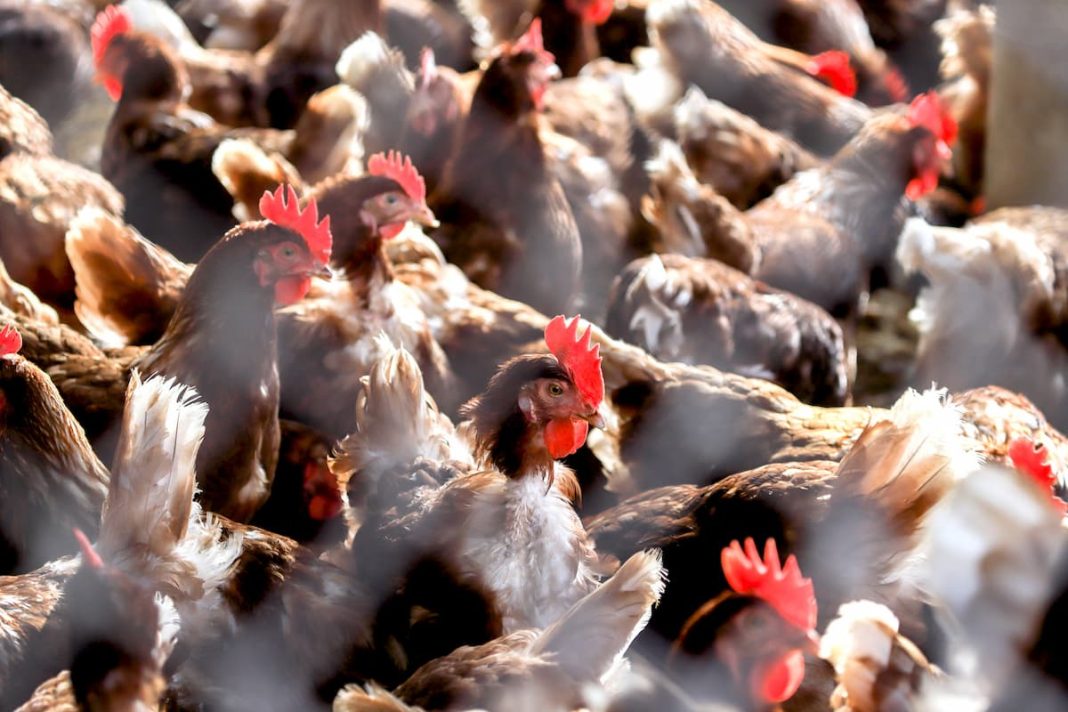This year brought reports of “high pathogenicity avian influenza” being detected in poultry farms in several Australian states. According to the Australian government, “All infected premises across Victoria, NSW and the ACT have been depopulated.” In other words, there were mass slaughters in those facilities.
It was only a matter of time until “bird flu” mania came to New Zealand and sure enough, it hit the headlines earlier this month. A test for a purported “virus” was rolled out in a few poultry farms and some came back positive. The response? A total of 160,000 chickens were culled in one Otago farm.
Although “bird flu” is relatively new in the Antipodes, it is a well-established story in Europe and North America. Our book Virus Mania was first published by my German co-authors in 2007 and warned that new “tests” such as the PCR were being used to create the appearance of new disease outbreaks. In recent decades, a small number of positive tests have been used as an excuse to slaughter hundreds of millions of birds. The deceptive inference is that they were all “infected” or at risk of being so when nothing of the sort was demonstrated.
Nobody is denying that birds get sick, but just like people, there are different reasons for how illness develops. However, when a test is introduced and the virus hunters arrive, the illusion of an outbreak can be created. This phenomenon was previously outlined for Canberra Daily readers in my article “Creating numbers for the pandemic industry”:
Even within the medical world a “case” is not the same as a clinical diagnosis or a disease. In general, a clinical diagnosis is based on symptoms (what the patient reports), signs (what is physically detected by the clinician), and sometimes laboratory test results. The definition of a case can mean “instance of disease” in the narrower sense, but in the wider epidemiological sense, it simply means “the criteria for categorising an individual as a case.” In other words, a case is whatever the inventor wants it to be.
Most media reports come with the impression that “bird flu” is a specific entity. However, Biosecurity NZ warns us about a wide range of signs, including sudden death, weakness, breathing difficulties, diarrhoea, loss of appetite, or an unusual drop in egg production. Anyone who has looked after poultry will know that these are not new problems and often it is difficult to determine their exact causes. Birds, in general, are sensitive to environmental toxicities – hence the historical use of the “Canary in the Coal Mine”.
An additional issue in these apparent outbreaks is the intensive farming practices. The Otago farm was considered “free range” as the chickens had access to an outdoor area. However, with around 40,000 birds in each shed, it is not surprising that there are misconceptions surrounding the loose definition of “free range”. People may also be unaware that “free range” birds typically receive pharmaceuticals such as antibiotics and vaccines.
Another aspect of “bird flu” mythology is the claim that ‘it’ may jump into human populations. As we reported in Virus Mania, the alleged “H5N1 strain” was supposedly poised to kill up to 150 million of us in 2005.
At the time the Friedrich Loeffler Institute in Germany claimed to have evidence for the “highly contagious” and pathogenic virus. My co-author Torsten Engelbrecht published a paper in 2006 exposing the lack of such evidence: the “virus” was based on detected genetic sequences and the case numbers relied on the derived PCR tests.
Two decades later and nothing has changed. In May this year, my colleague Christine Massey was mistakenly invited to an online H5N1 roundtable meeting headed by Theresa Tam, the Chief Public Health Officer of Canada. Once again, it allowed us to expose how the non-sensical “bird flu” story was being prepared for the public. My husband, Dr Mark Bailey, recently explained how these pseudo-outbreaks are manufactured in this radio interview.
It is now more important than ever that the wider public is made aware of the faulty science behind these events. As Mark and I warned in our most recent book, The Final Pandemic:
Humanity is under assault from “pandemics” but not for the reasons that the mainstream sources portray. This book examines the claims regarding alleged “contagious” disease outbreaks such as COVID-19 to shed more light on what they are, or perhaps more importantly, what they are not. The belief that germs from the natural environment (or a laboratory) are attacking us has led most of the population to go along with lockdowns, civil rights restrictions, unprecedented peacetime censorship and more vaccines. However, when the foundational science is exposed and it is understood how the cases are created, no “pandemic” looks the same ever again.
There is no sign that these events are going to ease up whether they are said to involve humans or animals. Ostensibly, it is claimed to be about public health but in reality, the benefits are mostly flowing to the growing pandemic industry. The reason we called our book The Final Pandemic was because it is up to you whether you want to participate in these scandals.
Dr Sam Bailey is a medical author and health educator from New Zealand. Her books include Virus Mania, Terrain Therapy and The Final Pandemic.
- Subscribe and follow her on Substack
- Access Drs Mark & Sam Bailey’s articles and videos at drsambailey.com



